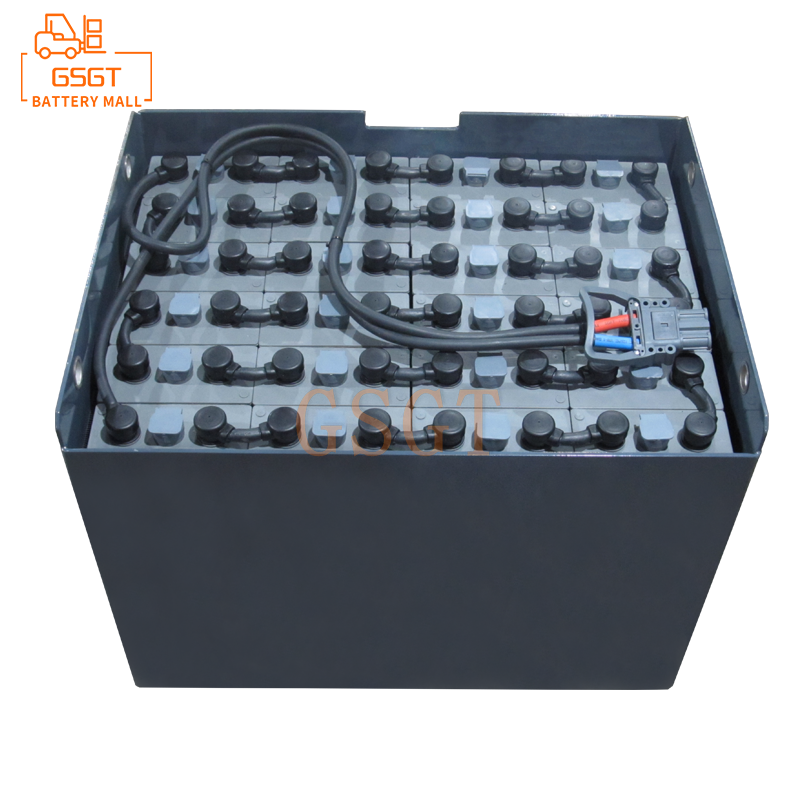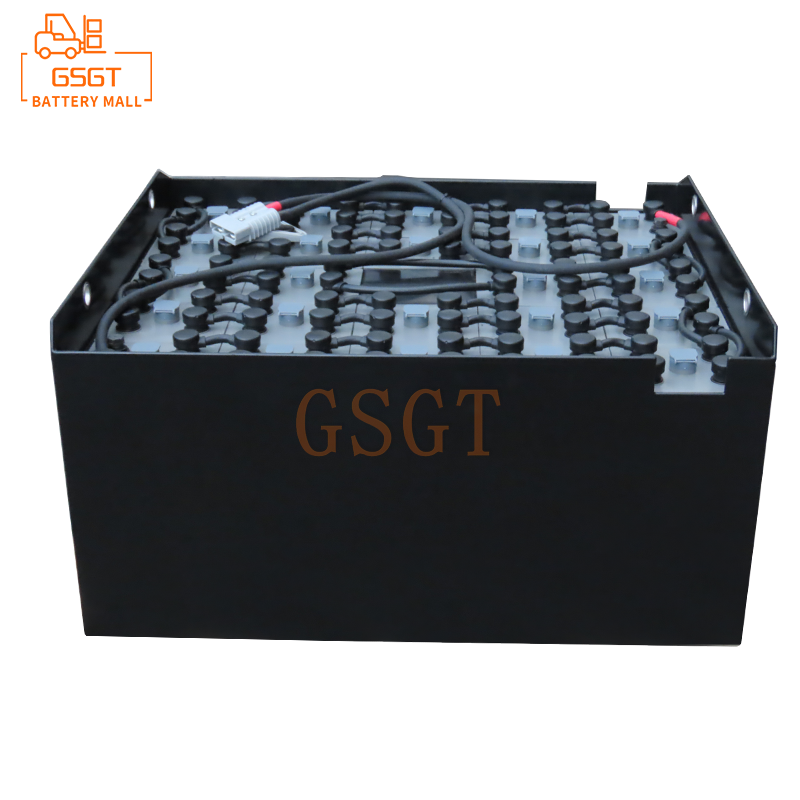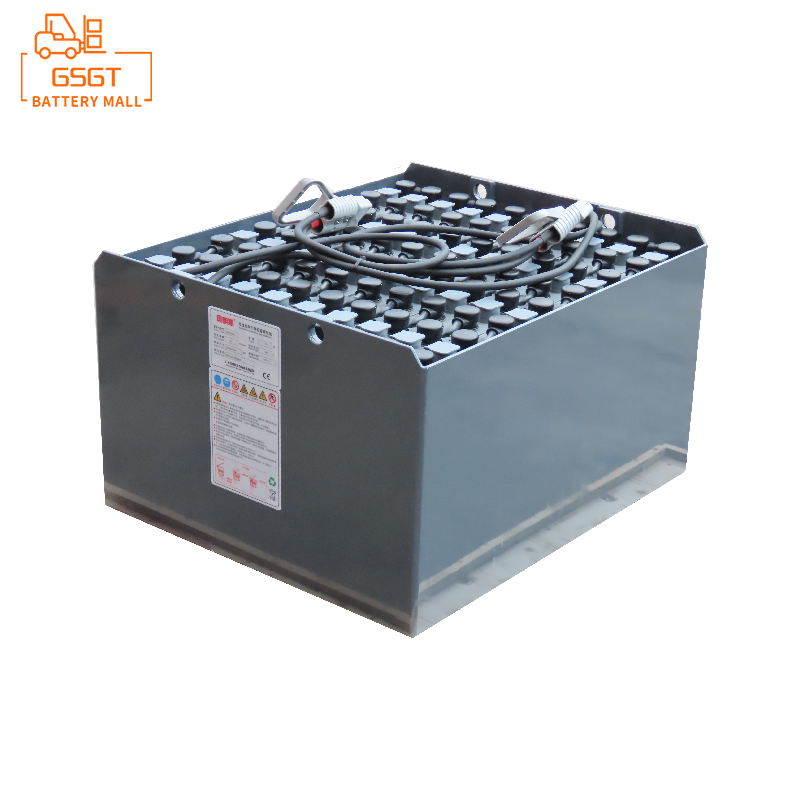Time:2025-07-11 09:49:31
Browse:619
In the daily use of forklifts, lead-acid batteries play a crucial role as they provide the power source for forklifts. Whether the operation before the first use is standardized directly affects the service life, performance and subsequent usage safety of the battery. Therefore, it is very necessary to understand the precautions for the first use of forklift lead-acid batteries.
Key points to note during the installation process
Installing lead-acid batteries for forklifts is a crucial step before their first use. Improper operation may cause damage to the batteries and forklifts, and even lead to safety accidents.
First of all, it is necessary to ensure that the installation environment is dry and clean. A damp environment is prone to causing short circuits in the battery, and dust and other debris may enter the battery interior, affecting its normal operation. Before installation, it is necessary to clean the dust, moisture and other impurities at the installation site to provide a good installation foundation for the battery.
Secondly, check the appearance of the battery. Carefully observe whether the battery has any cracked casing or leakage. If damage to the battery is found, installation should be stopped immediately and the supplier should be contacted for handling. Do not use the damaged battery by yourself to avoid danger.
Then, when installing, pay attention to the connection of the positive and negative poles. The positive and negative terminals of the battery must be correctly connected in accordance with the requirements of the forklift manual to avoid reversing them. Reversing the positive and negative terminals may cause damage to the forklift's circuit system and even burn out the battery. When connecting the cables, make sure they are firmly connected to avoid any loosening. Otherwise, it will affect the transmission of current and reduce the efficiency of the battery.
Finally, after the installation is completed, it is necessary to check the fixation of the battery. During the operation of the forklift, the battery is subject to vibration. If it is not firmly fixed, it may cause damage to the internal parts of the battery or lead to loosening of the cable connection. Therefore, it is necessary to ensure that the battery's fixing device is installed in place and is firm and reliable.
Precautions related to charging
The charging process of forklift lead-acid batteries before their first use has a significant impact on the performance and lifespan of the batteries, and must be carried out strictly in accordance with the specifications.
First of all, you need to choose a suitable charger. Lead-acid batteries of different models and specifications for forklifts need to be equipped with corresponding chargers and must not be mixed. If a mismatched charger is used, it may lead to undercharging or overcharging of the battery. Insufficient charging will reduce the battery capacity and affect the driving range of the forklift. Overcharging, on the other hand, will intensify the chemical reactions inside the battery, shorten its service life, and may even cause safety issues such as battery bulging and leakage. Therefore, before charging, it is essential to confirm that the model and specification of the charger match those of the battery.
Secondly, control the temperature of the charging environment. The optimal charging temperature for lead-acid batteries is usually around 25℃. If the ambient temperature is too high, it will cause the internal temperature of the battery to rise during the charging process, increasing the corrosion rate of the plates. If the ambient temperature is too low, it will reduce the charging efficiency of the battery, resulting in insufficient charging. Therefore, when charging, it is necessary to keep the ambient temperature within an appropriate range as much as possible and avoid charging in extremely high or low temperature conditions.
Then, follow the correct charging time. When charging for the first time, do not overly shorten the charging time, nor overcharge for a long time. Generally speaking, the initial charging time of lead-acid batteries is slightly longer than the normal charging time. The specific time can be referred to in the battery's user manual. During the charging process, pay close attention to the indicator status of the charger. When the charger shows that the charging is complete, the power supply should be cut off in time to stop charging.
Finally, protective measures should be taken during the charging process. When charging, the battery will produce a small amount of hydrogen. Hydrogen is a flammable and explosive gas. Therefore, it is necessary to ensure that the charging environment is well-ventilated and keep open flames away. Meanwhile, during the charging process, operators should avoid touching the electrodes and electrolyte of the battery to prevent electric shock or chemical corrosion accidents. In case of accidental contact with the electrolyte, rinse immediately with plenty of water and seek medical attention promptly.
Frequently Asked Questions
Question: Does the lead-acid battery of a forklift need to be discharged before its first use?
Answer: No need. The lead-acid batteries for forklifts have undergone initial charging and discharging treatment before leaving the factory and are in a normal standby state. If a discharge operation is performed before the first use, it is not only unnecessary but may also lead to insufficient battery power, affecting the performance of the first use. Therefore, it can be put into use directly after charging it in the correct way before the first use.
Question: If the power is not disconnected in time during the first charge and overcharged for a period of time, will it cause serious damage to the battery?
Answer: This needs to be judged based on the duration of overcharging. If it is only a short period of overcharging, it generally will not cause serious and permanent damage to the battery, but it may cause the active substances inside the battery to fall off, which will have a certain impact on its service life. At this point, charging should be stopped immediately and the appearance of the battery should be checked for any abnormalities, such as bulging or leakage. If there are no abnormalities, just pay attention to observing the performance changes of the battery during subsequent use. However, if the overcharging time is long and the battery shows obvious bulging, leakage and other phenomena, it indicates that the battery has been severely damaged. In this case, the use of the battery should be stopped and professional personnel should be contacted for handling or a new battery should be replaced.
In conclusion, the precautions for the first use of lead-acid batteries in forklifts cover multiple aspects such as installation and charging, and no link can be ignored. Only by operating strictly in accordance with the norms can the performance of the battery be fully exerted, its service life be prolonged, and safety during the usage process be guaranteed.

$3070

$5880

$7660

$8340

MESSAGE
Professional And Efficient
Security
Affordable Price
Professional Services